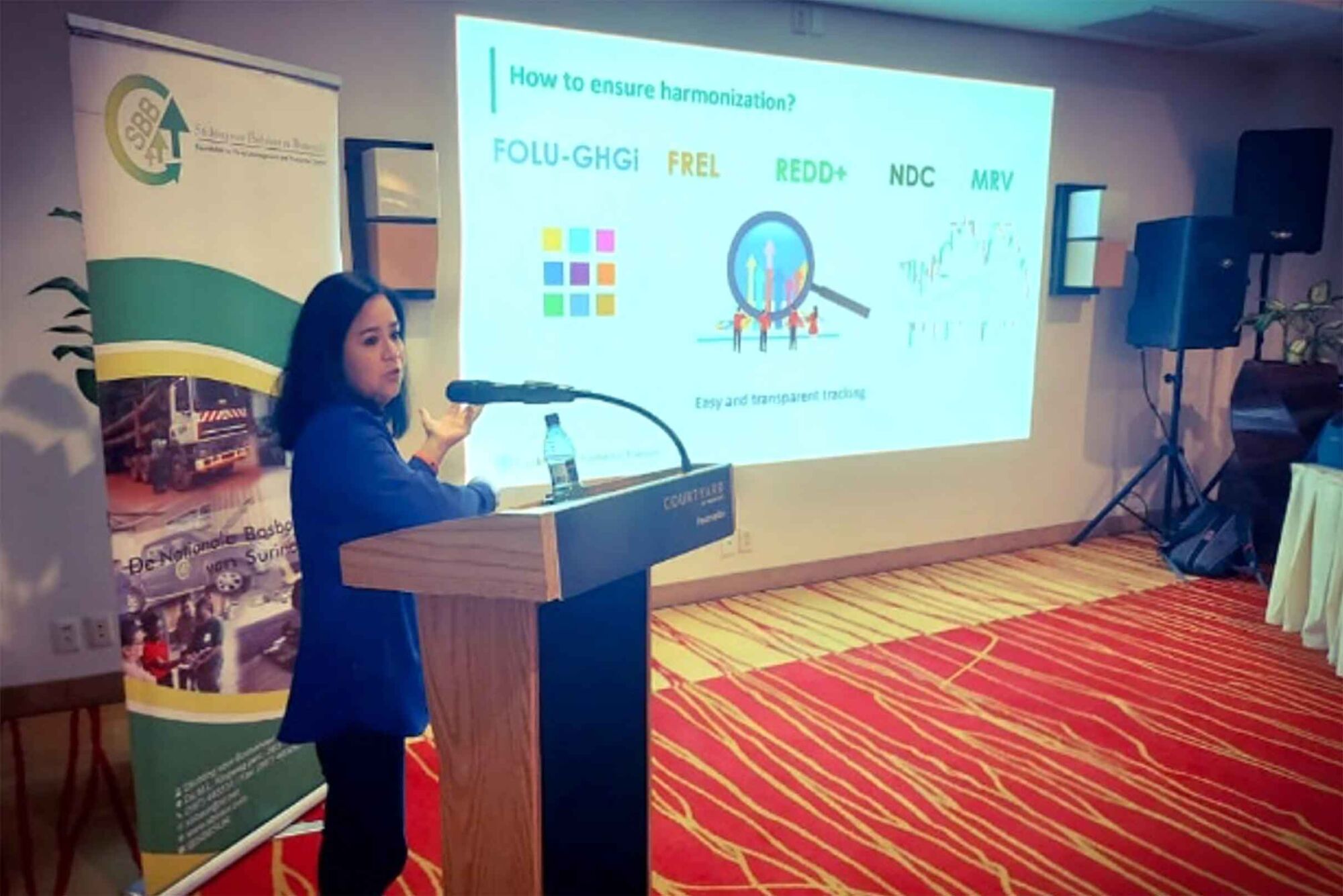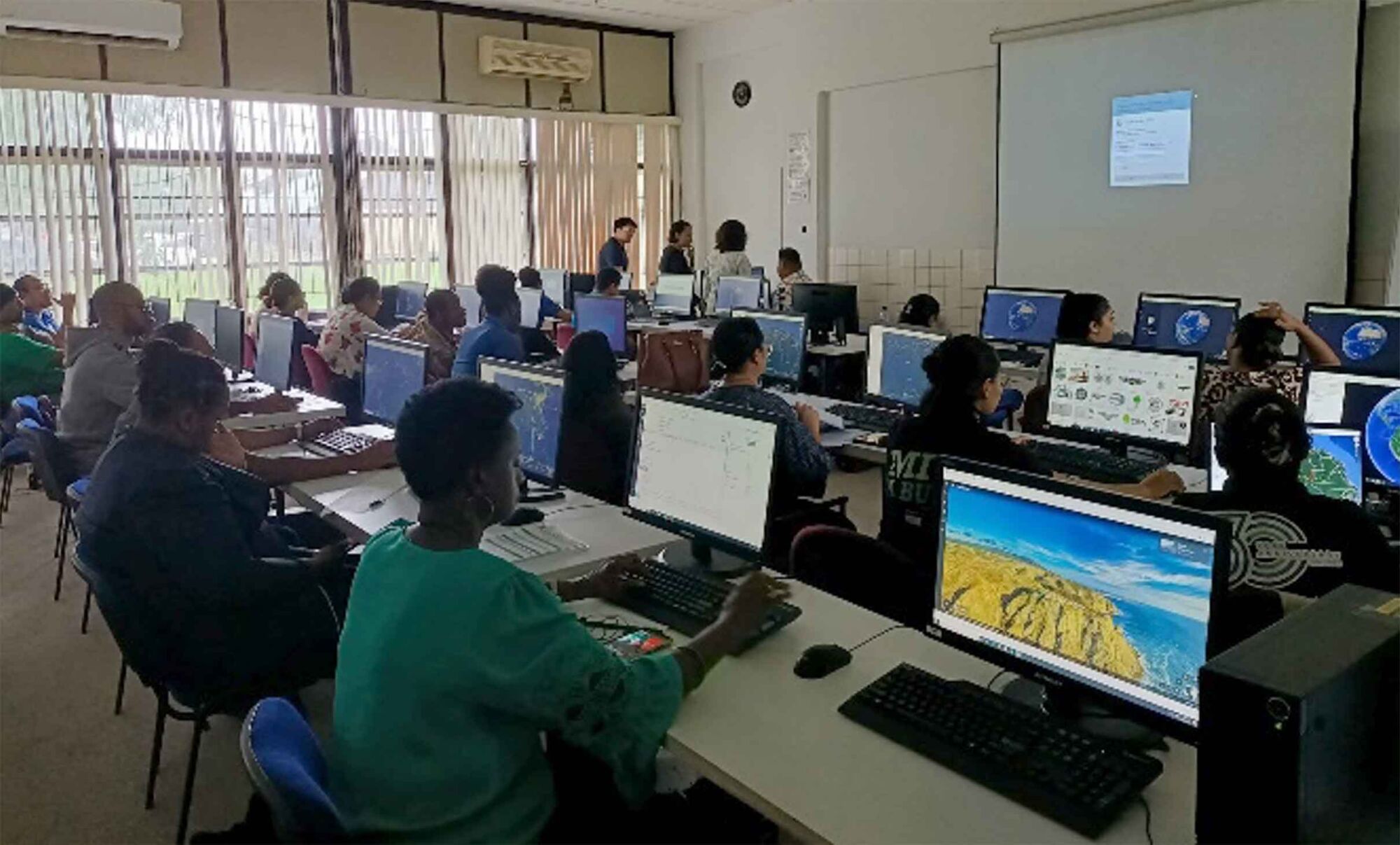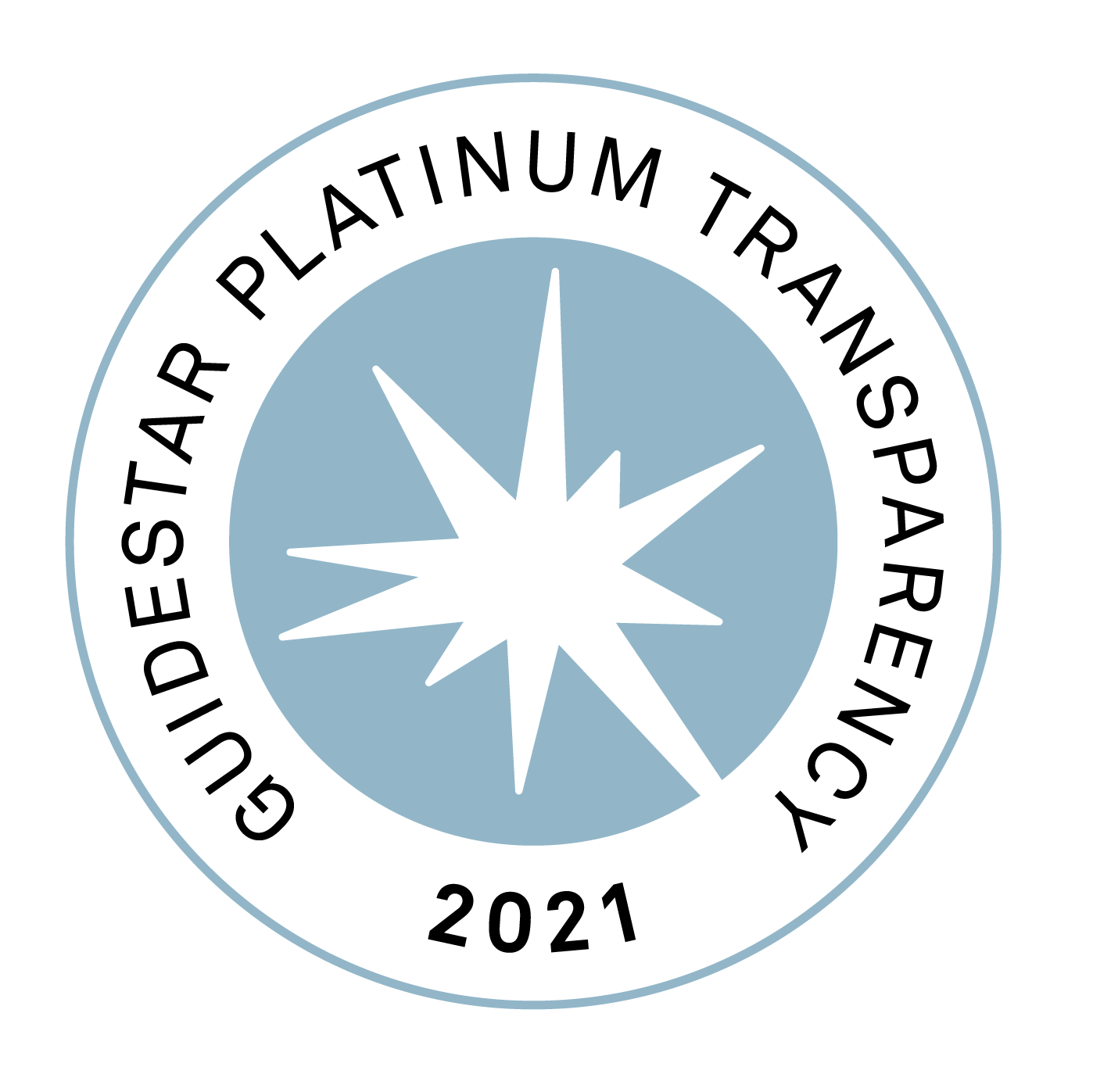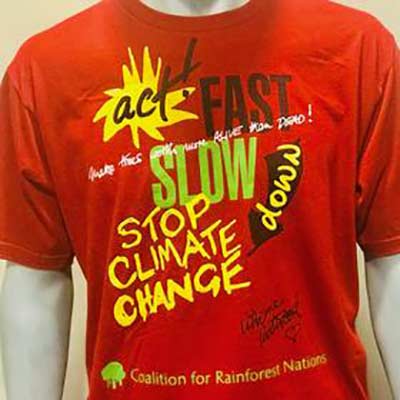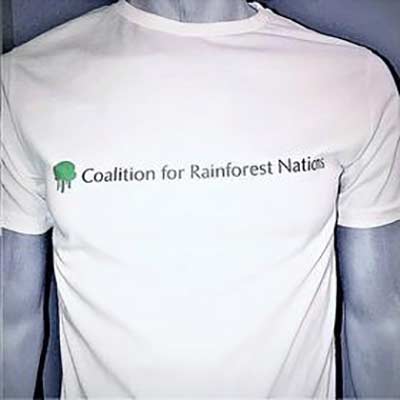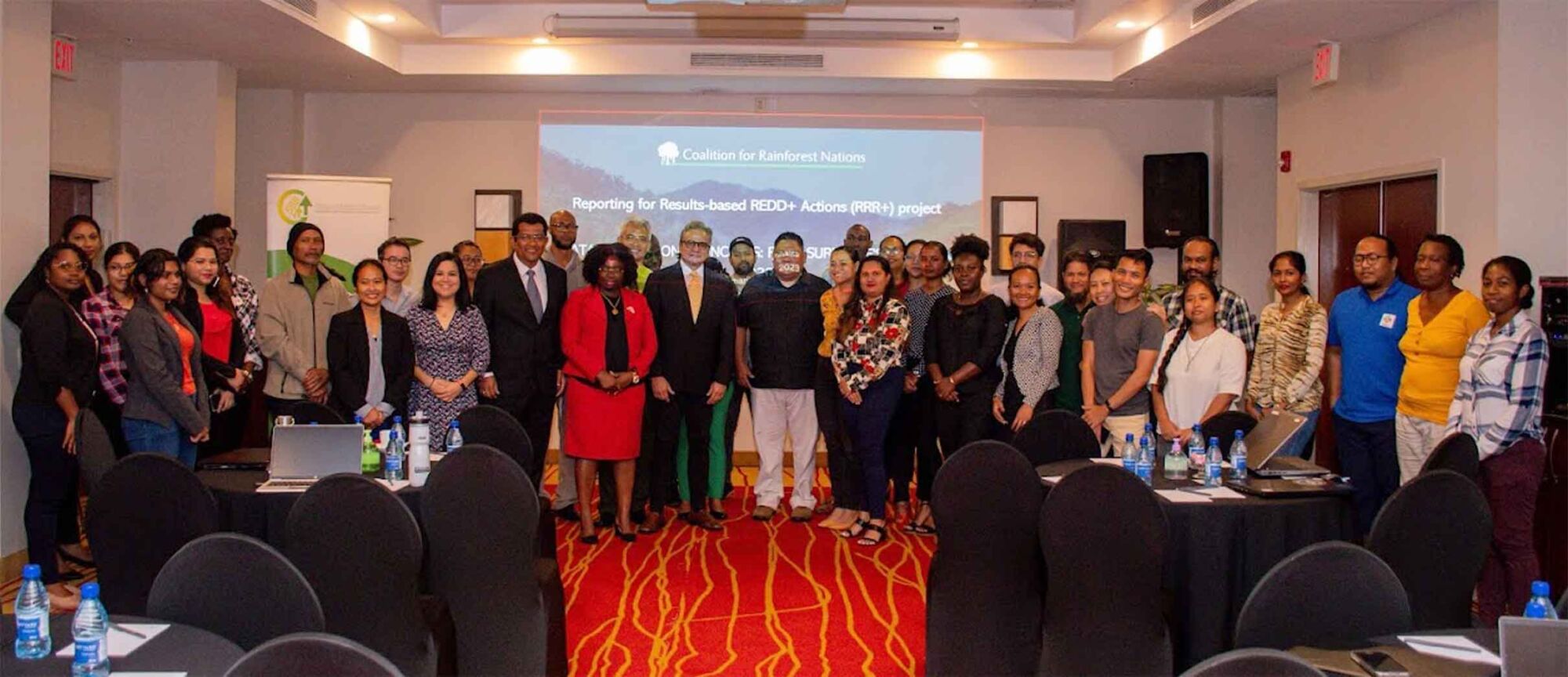
CfRN mission to Suriname builds closer ties on REDD+
In February, CfRN’s policy and technical teams visited Suriname to discuss closer collaboration on capacity building, specifically on how to support its Land Use and Land Use Change (LULUC) assessment for 2000 – 2022.
Suriname has made significant progress in meeting all the requirements of the REDD+ Framework. So far, it has presented two Forest Reference Emissions Levels (FRELs) as well as two Technical Annexes (TA) for REDD+ Results Evaluation to the UNFCCC. The first covers the years 2016-2019 and is based on the FREL 2018 report, while the second covers the years 2020-2021 and is based on the FREL 2021 report. The country intends to receive payments based on REDD+ results for the years reported.
Suriname is one of the smallest and least populated countries in South America, but it is also one of the greenest. It is considered a global leader in biodiversity conservation, with more than 90 per cent of its land surface covered by native forests and unrivalled natural resources.
16% of the country's land area is national parks and lakes, according to the UNEP World Conservation Monitoring Centre. The Central Suriname Nature Reserve has been designated a UNESCO World Heritage Site for its unspoiled forests and biodiversity. There are many national parks in the country, including Galibi National Reserve along the coast; Brownsberg Nature Park and Eilerts de Haan Nature Park in central Suriname; and the Sipaliwani Nature Reserve on the Brazilian border.
Suriname has a high diversity of species, several globally endangered, and many species that can only be found specifically in these locations:
- 318 species of freshwater fishes
- 277 species of herps (102 amphibians and 175 reptiles)
- 715 species of birds
- 192 species of mammals
Suriname and the Coalition for Rainforest Nations (CfRN) have been collaborating in the UNFCCC negotiation process for many years and both country’s REDD+ technical teams have been working very closely since March 2022. The country joined the CfRN’s capacity building program, called REDD+ Results Reporting (RRR+) early in 2022. The purpose of this mission was to explain how by participating in the program, Suriname could improve its technical and institutional capacity to prepare and present its GHG inventory to the UNFCCC.
With the various meetings and workshop, CfRN provided an overview of current institutional arrangements, and the corresponding flow of data between institutions for the development of the National GHG inventories, specifically the Forest and Other Land Use (FOLU) sector, and REDD+ activities. The CfRN team also presented its training program, which could provide support on the Land Use and Land Use Change assessment at national level. Through this land assessment, Suriname will be able to institutionalize the process of annual data collection and have full autonomy of the entire process which the country needs to regularly update their national GHG inventories as part of their commitment to the Paris Agreement.
Further meetings are being planned to follow-up on the mission.
